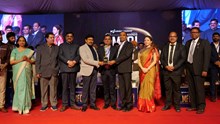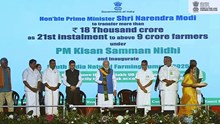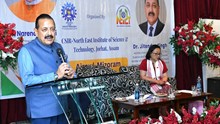
The literature on the role of agriculture in development concludes that structural transformation of economy is marked by decline in share of agriculture in economy’s output and employment as an economy grows from low-income towards middle and higher-income. Based on this, policy emphasis for growth and development tilted towards non-agricultural sectors, specially manufacturing.
The root of this line of thinking is traced to the work of British Economist Arthur Lewis (1954), who described economic development as a growth process of relocating resources from agriculture, characterised by low productivity and traditional technology, to modern industrial sector with higher productivity. This theory assigns very passive role to agriculture in economic development but it has been widely used by many developing countries to support industrialisation. In the post-Green Revolution period, some assumptions of Lewis model of development have been refuted. First, the green revolution shows that technology can play a significant role in modernising agriculture and in generation of surplus as visualised for the Industry. Two, the assumption of unlimited supply of labour in agriculture holds no more. These changes have implications for model of economic transformation from agrarian economy to industrialised economy.
Recent Experience
Experience of last three-four decades in case of developing as well as fast-developing economies shows that the process of shifting workforce out of agriculture is very slow and not smooth. Share of agriculture in gross domestic product (GDP) is found to follow much faster decline while employment share falls at a much smaller rate. This is demonstrated by the experience of large number of countries at different stages of economic transition and development. For instance, during the three decades between 1991 and 2021, per capita GDP (measured in 2015 in US$) increased by more than 10 times in China, 4.8 times in Vietnam, 3.4 times in India, and 2.4 times in Indonesia. However, this did not lead towards convergence in labour productivity (gross value-added per worker) in agriculture and non-agriculture sectors.
In the set of these four emerging economies, highest disparity in per worker productivity or income between agriculture and non-agriculture is witnessed in China, which experienced very high growth in PCI (per capita income) and output of manufacturing in the last three decades. An agriculture worker in China generates merely one-fourth of the income generated by a non-agricultural worker. India and Vietnam are close to China while Indonesia shows lower disparity. It emerges from these experiences that faster growth in non agriculture and so-called modern industrial sector did not lead to commensurate shift in workforce from agriculture. As a result, share of agriculture in employment remained stubbornly higher than its share in output or income of the economy — three times in China, two-and-half times in India and Vietnam, and more than two times in Indonesia.
Some other contradictions with conventional model of structural transformation are: One, South Africa, at much higher level of per capita income and development, shows the highest disparity in per worker income in the list of major countries studied by the author. An agriculture worker there earns less than one-tenth of non-agriculture worker; and two, share of agriculture in total GDP shows increase in the recent period in some countries like Brazil and South Africa, and for the world as a whole, after the global financial crisis that began around 2007.
It is evident that structural transformation of economy towards manufacturing and other non-agricultural activities does not adequately address wide gaps in productivity across sectors and low income in agriculture. This is in sharp contrast to the Lewis model and theories of economic development based on this model. The underlying reason being inability of manufacturing sector to create jobs at faster rate.
Poverty and other Development Goals
Strong empirical evidence points to centrality of agriculture growth for poverty reduction and overall growth in developing countries. Analysis based on state-level data in case of India shows that agriculture development measured by any indicators like land productivity, or worker productivity in agriculture, has very strong impact on incidence of rural as well as total poverty.
The pathway to eradicate poverty and raise income of masses is through remunerative employment. However, employment is emerging as the most serious challenge of our time. Technological innovations of various kinds like robotics, machine learning, automation, AI etc. are favouring capital-intensive production in some cases to the detriment of deployment of labour.
Sustainability and climate challenge are emerging as serious threat to survival of people and the planet. Agriculture is a major user of natural resources. According to official sources, 80-90 per cent of total water used in India is used in agriculture. Global average is 70 per cent. Still more than 50 per cent area under cultivation is without irrigation. Groundwater resources are getting depleted in almost all the states in the country. Almost half of the land in India is for agriculture uses (arable land). Therefore, the way agriculture is done determines quality of soil and other natural resources. Very less area is available for ecological activities and functions. Meeting land requirement for non-agricultural uses and addressing sustainable land use necessitate higher productivity in agriculture.
Agriculture’s share in global GHG (greenhouse gas) emission is reported to be much higher than its share in global output and income. In India, agriculture is responsible for 14 per cent of total GHG emissions, though the emissions from agricultural activities are generally not visible. It is evident from above that agriculture is central to climate change and clean air, and sustainable use of land and water. Agriculture is both part of the problem and part of the solution to climate change and sustainability. Among all sectors, agriculture offers the best hope for green growth that is environmentally sustainable.
Health and Nutrition
Consumers are increasingly becoming conscious about food quality and showing preference for food with specific attributes. The awareness of strong connect between food and health & immunity is spreading. This requires integrating demand with supply through well-designed supply chains and direct linkages between producers and consumers. New interest has emerged in the therapeutic values of food and its proper usage in order to maintain overall immunity and for good health. As a result, the demand for medicinal plants and varieties with specific attributes is on the rise. Some entrepreneurs are connecting consumers and producers through innovative value chains for the supply of such products. Large-scale supply of such products will require the creation of value chains with traceability and labelling. Overall, all these changes in food demand brings an opportunity for a new type of agriculture, which can offer more attractive and more paying employment within the sector.
Agri-focused inclusive development
The pathway to eradicate poverty and raise income of masses is through remunerative employment. However, technological innovations are favouring capital-intensive production to the detriment of deployment of human labour in industry and services sectors. As a result, it takes very long to shift workforce out of agriculture. Even with rapid growth of economy, the share of agriculture in employment remains high as seen from the experience of China. This implies that agriculture has to continue as a source of major employment for long time even after reaching high level of PCI.
This necessitates focusing on new activities in and around agriculture, and making agri jobs more remunerative and attractive. This will require modernisation of agriculture from seed to sale and very close linkage between production and end-use. On the production side, this should include high-tech, high productivity and knowledge- and skill-intensive farming. Further, there is tremendous scope for “on-farm value addition”. Consumer preferences in food are shifting towards freshness, quality, safety, and unique traits. Even in non-food, choices are shifting towards “bios” from synthetics and chemical products. A whole lot of farm-level cottage industry can be developed to harness such opportunities.
The second route for agriculture-led economic transformation is possible from innovations in biotechnology. Advances in plant biotechnology are making it possible to produce customised products to meet health, pharmaceuticals, and other needs. The counter to adverse effect of digital technology on jobs can come from plant biotechnology that leads to development of crops which can serve as factories for the synthesis of valuable metabolites and organic compounds.
The context of economic development has changed as employment, sustainability, environment services, poverty, nutrition, and health have become major concerns of our time. In this changed context, agriculture is seen to play a much larger and different role than perceived in the dominant thinking in development economics.
(Source: Business Standard)













Share your comments